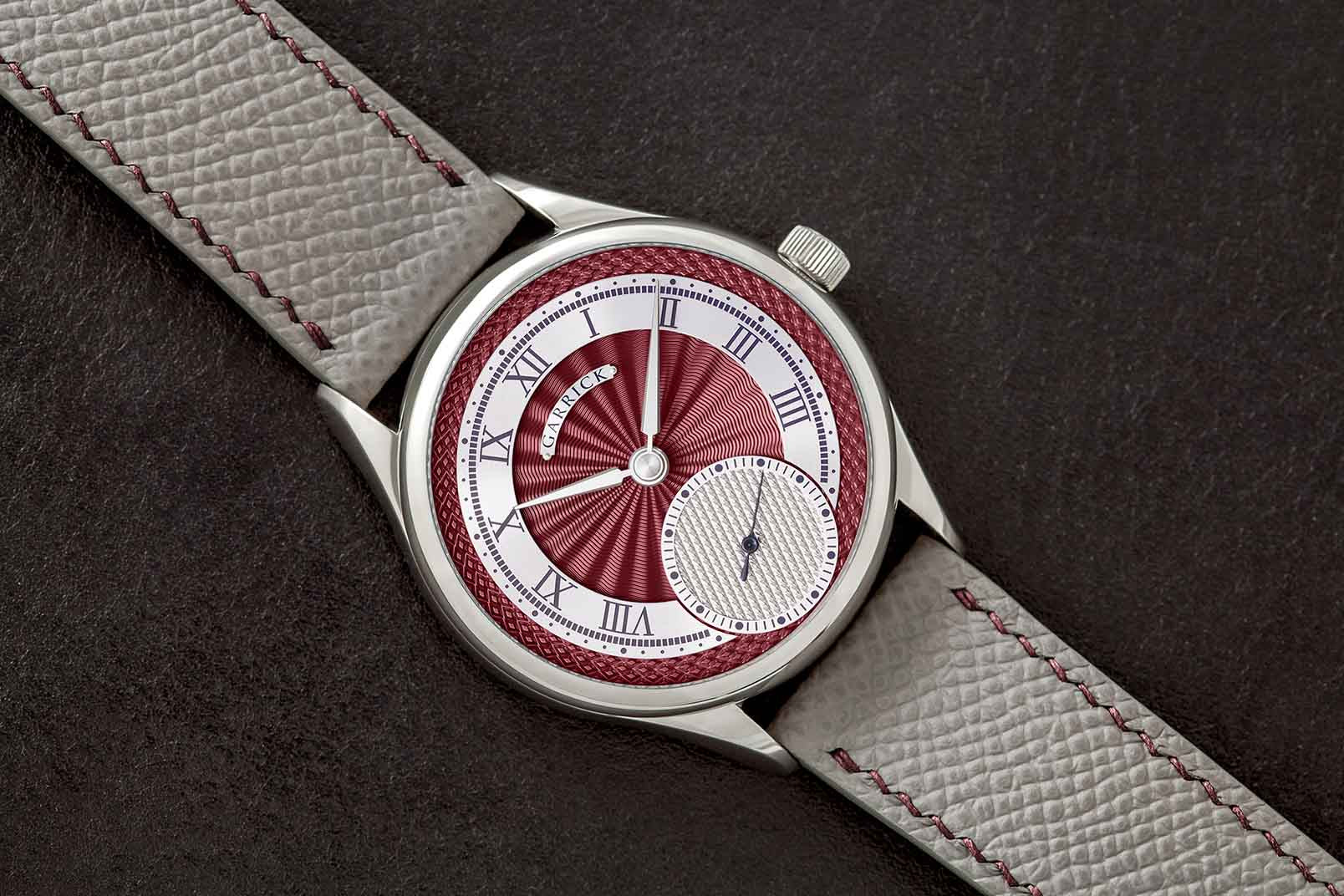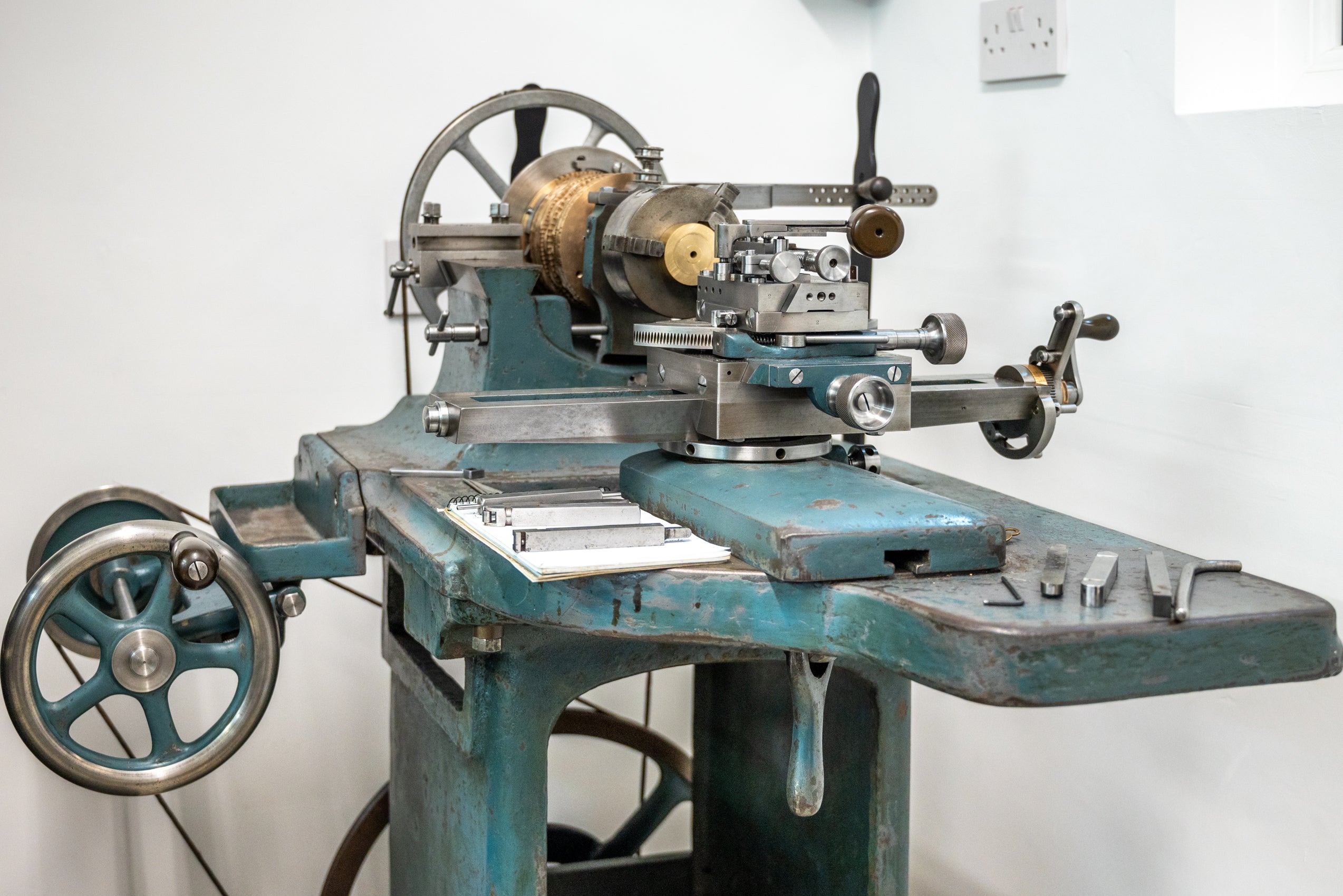Introducing the Garrick Rose And Straight-line Engines
The vintage machines that make our dial art come to life.
Traditional watchmaking and craftsmanship are the two keywords that drive us here at our Norwich workshop. The latter term is today often used as not more than embellishment, but with us, it is an ethos, along with the wish to deliver a bespoke experience far removed from mass-produced wristwear.
Big-brand cachet has more meaning than ever, but at Garrick Watchmakers, since our inception in 2013, you, the watch buyer, are our focus. And we pride ourselves on the time-honoured skills of British watchmakers; in fact, being part of the current UK resurgence is thanks to you.
Today, we want to invite you into the fascinating world of our in-house dial, finishing with the help of our workshop's enigmatic rose engine lathes and straight-line engines. You might have heard the term and equated it to our intricate dial patterns, a time-consuming task performed on these vintage, mechanical members of the Garrick family.

The latest additions to the Garrick workshop are two rose engine lathes that, on arrival, were stripped down, and a full-blown restoration took place, requiring hours of labour-intensive work akin to restoring a vintage race car.
A rose engine lathe is a specialized lathe, a geometric one. The device creates what is known as Guillochè, a term for the mesmerizing, engraved patterns on a watch dial or rotor. The rose engine lathe can produce patterns similar to that of a Spirograph on a metal surface, something no other ornamental lathe can manage. Two of our recently acquired rose engine lathes are at work in our workshop after lengthy rebuilds. These vintage machines are a historic, hard-working part of our Norwich workshop and turned dials for the famed watchmaker Derek Pratt.

The decoration produced by a rose engine lathe is traditionally called guillochè and can create flower patterns and symmetrical, multi-lobed geometrical patterns. Its poetic name comes from the rosettes used to create the patterns, interchangeable discs with milled edges. They produce wave-shaped patterns we know from traditional watchmaking, such as barleycorns, basket weaves, moires, drapes, and many others.
Our straight-line engine also works the surface of our dials by cutting patterns in the brass dials that we produce. While the rose engine lathe creates a curving vision of complexity, the straight-line engine has a more formal execution through straight cuts. This is how we make miniature pyramid shapes of light-catching hobnail and piquè patterns.

All our brass dials are made from bare metal, after which our rose engine and straight-line lathes create fascinating light-playing patterns before plating. All part of making our S4, S5, S6, and S7 models stand out with a nod to centuries-old traditions first introduced in 18th Century pocket watches. The patterns of the United Kingdom's first postage stamps, including the Penny Black of 1840, were based on rose engine patterns.

In our tech-focused world, engine turning is a dying art, and vintage lathes, our tools of the trade, are today extremely rare. Even when one is found, its age means it will always require extensive restoration. Our operators also need to have an extensive knowledge of its workings to create the patterns, some of which are incredibly complex. In our workshop, we only learned through trial and error how to operate and set up the machines. But at the end of the day, this is all part of our mission to keep the art of traditional watchmaking alive.
All Garrick watches are built to order, and would-be clients can choose from a choice of patterns and finishes for their dials. All this is made possible by keeping alive the ancient techniques that set our work apart from everyday wristwear, and makes your Garrick watch one of only a few.

